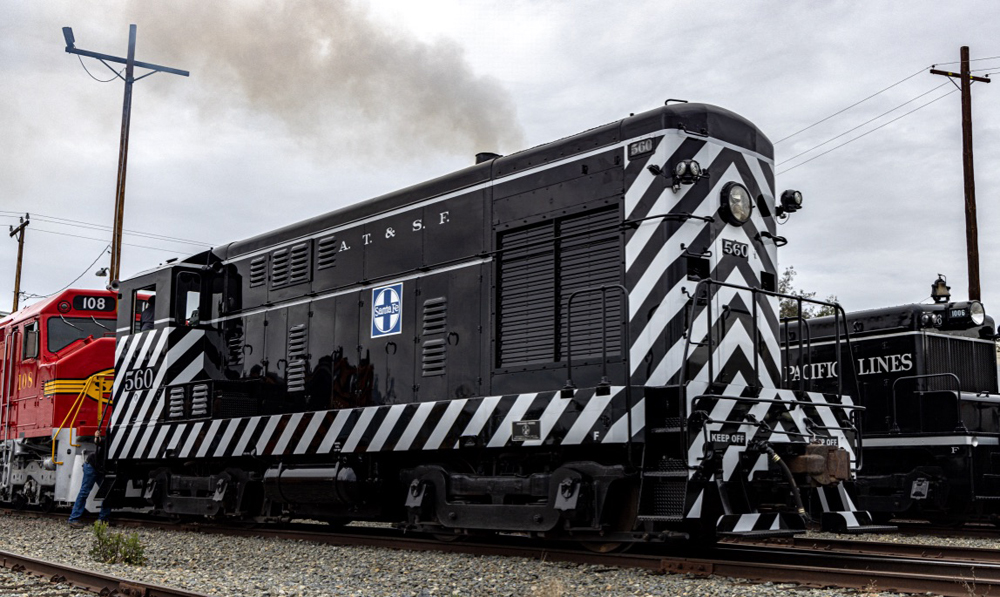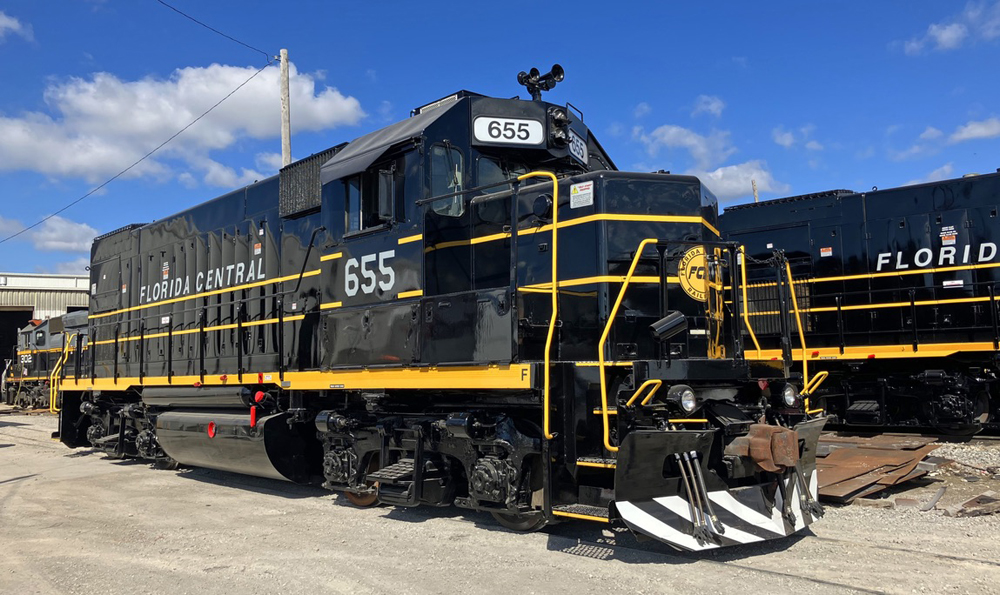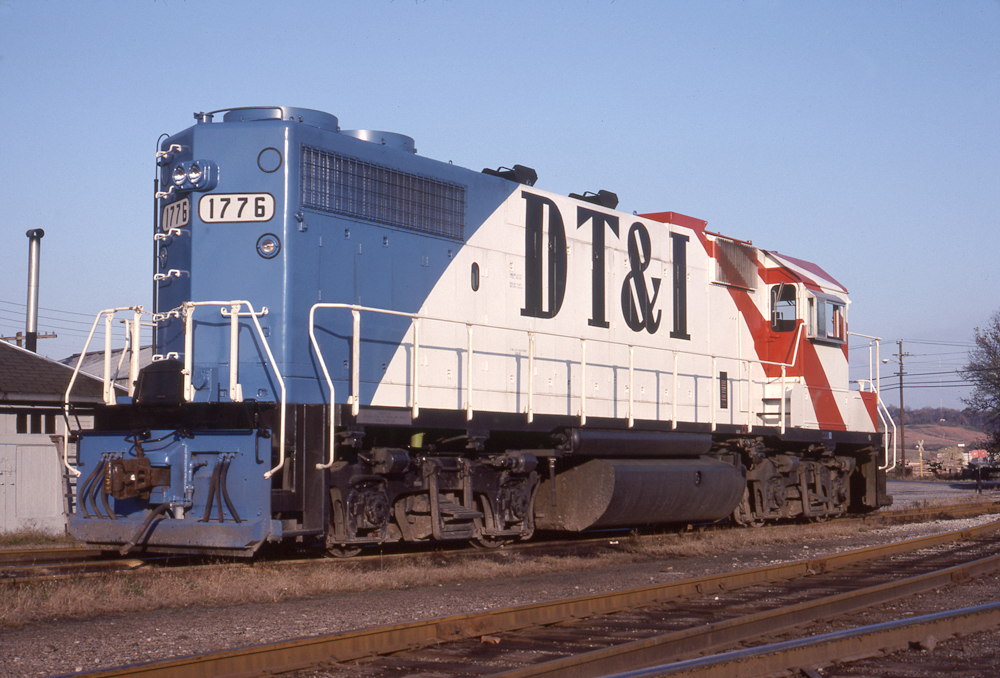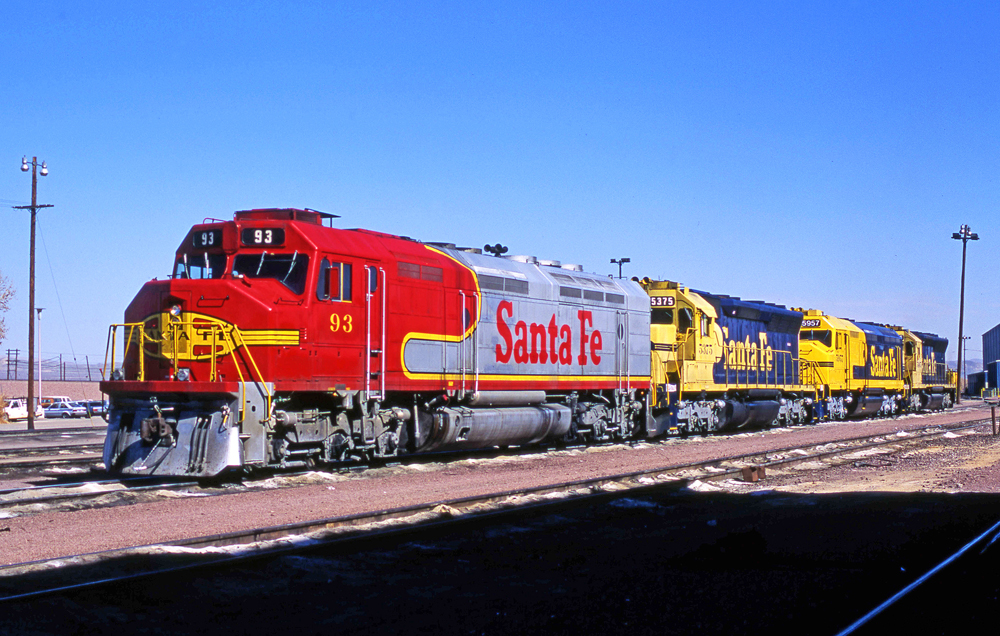Diesel locomotives
Switchers

Let’s start small. Switchers, as their name implies, are designed to handle the switching of rolling stock, be it freight or passenger cars or even other locomotives, in a terminal or an industrial setting such as a steel mill.
The typical switcher has an operator’s cab on one end of the frame (usually designated the rear end of the unit) and the mechanical components — diesel engine, generator, and so forth — under a hood mounted ahead of the cab. The radiator assembly, which is at the front of the hood, marks the front of the unit.
This layout allows the engineer a relatively unobstructed view from the cab of crew members performing switching duties. The small size of the switcher also allows it to negotiate the tight track curvature and narrow confines that characterize much industrial and shortline railroad trackage.
There is one exception to this end-cab switcher layout, General Electric’s “1974 line” of center-cab units. As the name implies, their cab is mounted in the center of the frame, with the mechanical components divided between hood sections both fore and aft of the cab. Although Burlington Northern, Chicago & North Western, and other railroads tested this type of switcher in the late 1970s and early 1980s, most active examples can be found in industrial use.
Light road-switcher

The light road-switcher consists of switcher machinery on a road engine frame and trucks. The concept was realized in 1941 when builder Alco took a 1000 hp end-cab switcher, lengthened the frame, added a shorter hood section behind the cab, and exchanged the switcher’s trucks for road trucks (more on trucks later). The result was a low-horsepower locomotive that was at home in the yard and, in the case of local work and other non-priority service, out on the road.
The light road-switcher concept pioneered by Alco’s RS1 survives today in two modern builder models: General Electric’s U18B and EMD’s GP15. The latter follows in the path of the RS1 by offering the machinery of EMD’s MP15 switcher on a lengthened road-switcher frame.
The resulting locomotive — equipped with a short hood ahead of the cab, a tall long hood, and EMD road trucks — resembles a shrunken version of EMD’s larger, medium road-switcher GP38.
The advantages of the GP15 over its MP15 cousin: better tracking and weight distribution at high speeds and, to the relief of head-end crew members, a toilet in that short hood.
GE, on the other hand, offered no end-cab 1500 hp switcher upon which to base the U18B. It is simply a physically smaller 1800 hp version of the builder’s medium road-switcher, the U23B.
Medium road-switcher and high-horsepower road-switcher

As you might guess, the difference between medium- and high-horsepower road-switchers is primarily one of horsepower.
The horsepower rating range for medium road-switchers is 2000-2500; production high-horsepower units are rated 3000 hp and above. True, a medium-horsepower EMD GP38-2 may look almost identical to its high-horsepower sister GP60, but the GP38-2 turns out a mere 2000 hp versus the GP60’s 3800.
Why would a railroad buy a locomotive such as the GP38-2, which can do only half the work of a GP60?
Imagine for a moment that you’re the chief executive officer of a railroad. Your 35-year-old, 1500-hp GP7s and 1750-hp GP9s haul local and non-priority, secondary trains. But your Geeps are getting old. Maintenance costs are climbing and the chances of mechanical failures out on the road are high. You want to replace them with more efficient units, but the lowly service they perform doesn’t warrant the purchase of high-horsepower road-switchers. Your best option, if you’re committed to buying new power, is to spring for medium horsepower locomotives, which cost less than their high horsepower stablemates.
But don’t put your feet up on the desk and light that cigar yet. You still have to decide what axle configuration you want these units in. While it’s true that modern switchers and light road-switchers only come with four axles (two per truck, or four-motor locomotives) medium road-switchers come in B-B (four-motor) and C-C (six-motor) versions.
Naturally a unit with six expensive traction motors is more expensive than a comparable unit with four. What’s more, six-motor units in the medium road-switcher range tend to be less versatile than their four-motor counterparts, in part because the four-motor locomotive will negotiate curves that would strike fear into the heart of its six-motor kin.
The six-motor truck, on the other hand, seems to be the wheel arrangement of preference for railroads ordering locomotives for lower speed, heavy-haul service such as coal and iron ore unit trains. Four-motor, high-horsepower road-switchers once seemed to be the unit of choice when it came to high-speed, long-distance service, although six-motor units eventually made inroads here, too, as more goods were shifted from trailers to containers and the weight of intermodal trains increased.
Cowl unit

The M and W designations tagged on to the back of locomotives indicate that the units are high-horsepower road-switchers equipped with comfort cabs. These roomier, safer cabs trace their heritage to our last locomotive type, cowl units.
A cowl unit is a road-switcher underframe with a cowl carbody that serves no structural purpose other than to support itself. The first and most popular cowl units were EMD F45s and FP45s, built at the behest of Santa Fe and later for Milwaukee Road, Great Northern, and Burlington Northern. The idea was to lower wind resistance, create an airtight carbody, and provide crew members with an enclosed area to troubleshoot locomotive problems en route. The FP version sported a steam generator for passenger service, as did its GE counterpart for Santa Fe, the U30CG.
Like ordering six-motors instead of four, cowl units cost more than their conventional kin.
The torch lit by EMD’s FP45 and GE’s U30CG was passed on to later passenger locomotive models: the four-motor F40PH and F59PH. Although Amtrak has gotten rid of its F40s, VIA Rail Canada and many commuter railroads in the U.S. and Canada operate F40s or F59s in suburban service.
GM’s SD50Fs, SD60Fs (Canadian National), and SD40-2Fs (CP Rail) are the only new full-cowl units built for freight service since the demise of EMD’s F45 in 1971, but the legacy of one aspect of the cowl unit — its roomy, streamlined cab — survives in the contours of today’s comfort cab.













